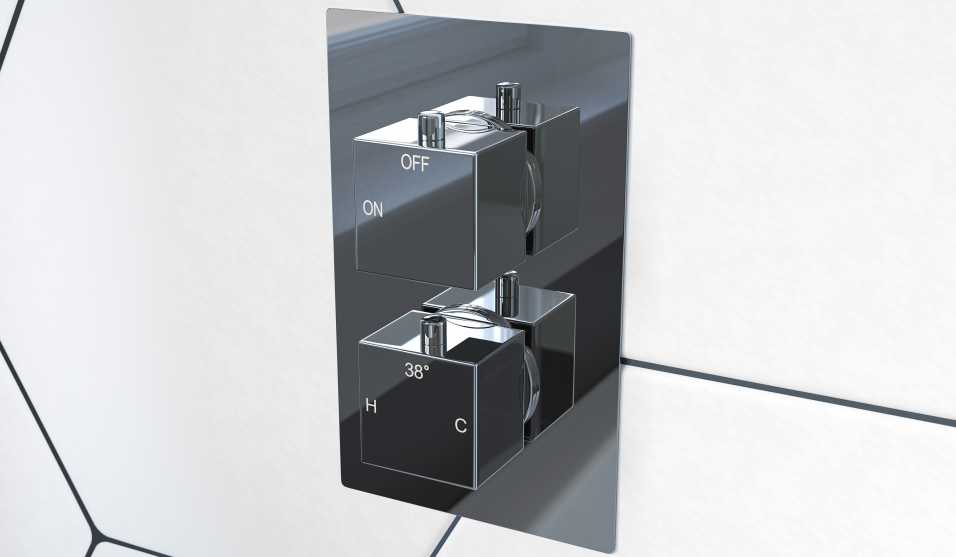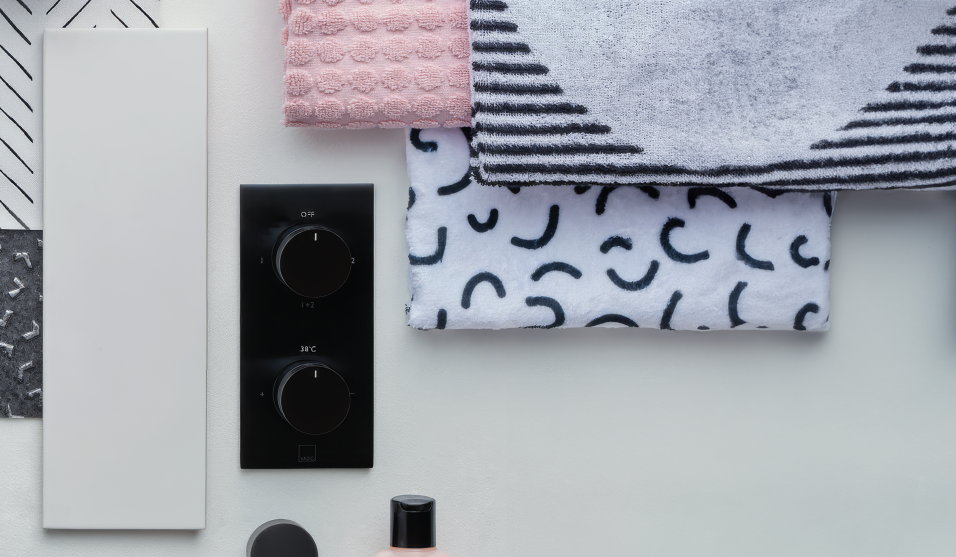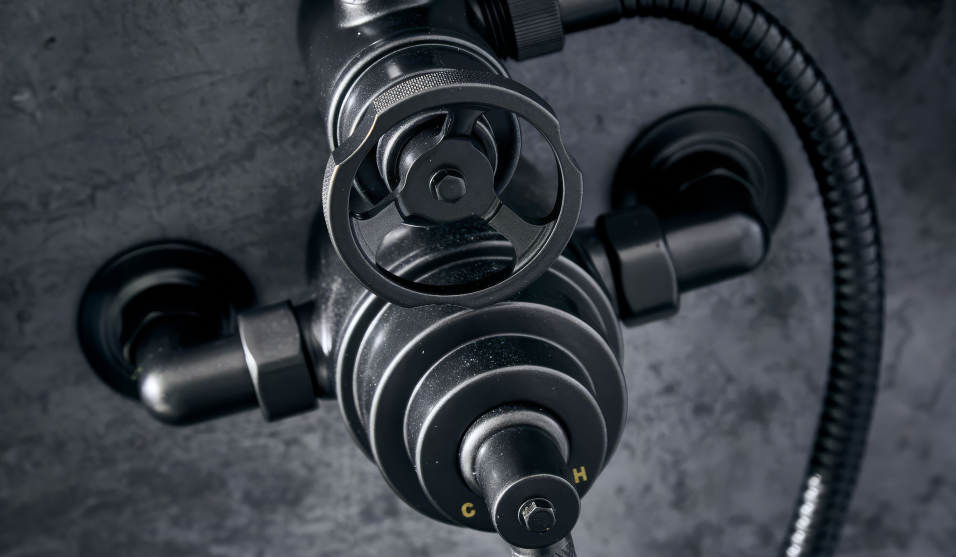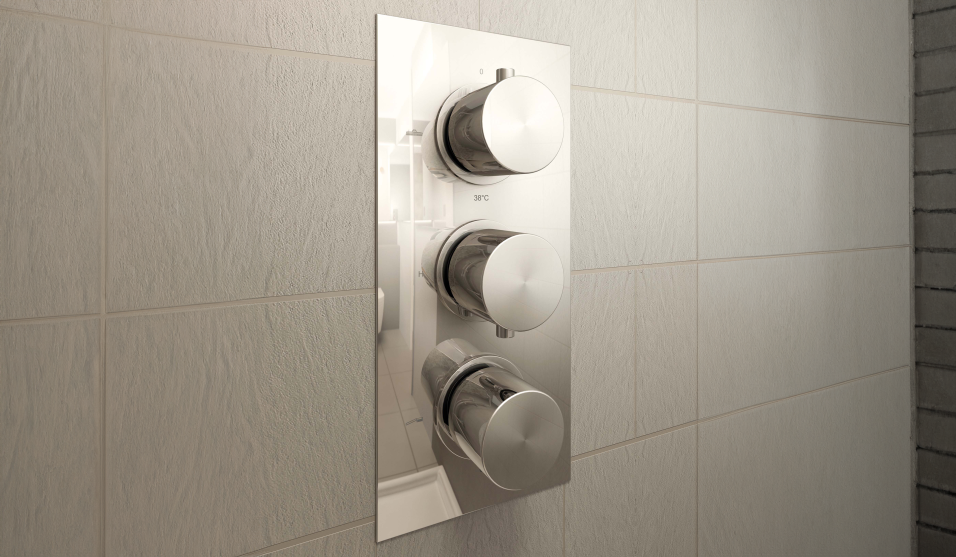| Tags | walk-in bath bath easy riser montana priya tray sizes anti-slip shower tray sizes shower tray freestanding baths geberit aquaclean aquaclean carron corner bath carron baths show all posts |
How Do Thermostatic Shower Valves Work?: Understanding Safety, Comfort, and Efficiency
Everyone appreciates a shower that provides not just cleanliness but also supreme comfort and safety. One of the keys to achieving an ideal shower experience is the ability to control and maintain a consistent water temperature. Sudden changes in water temperature during a shower can be anything from mildly annoying to downright dangerous. That's where thermostatic shower valves come into play, enhancing not only the comfort but also the safety of your showering experience.
Thermostatic valves are specifically designed to regulate and maintain the water temperature at your desired setting, despite fluctuations in the water supply temperature or pressure. This makes them an essential component for any modern bathroom, prioritising safety, efficiency, and comfort. By understanding how these valves work, homeowners can make informed decisions about their bathroom fittings, ensuring a superior and consistent showering experience.
What are Thermostatic Shower Valves?
A thermostatic shower valve is an advanced plumbing fixture designed to control the temperature of shower water with precision. It does so by automatically adjusting the mix of hot and cold water to reach and maintain a pre-set temperature, regardless of changes in the temperature or pressure of the incoming water supplies. This means that once you set your desired shower temperature, the thermostatic valve works to keep it constant, providing a steady, reliable shower experience every time.
The primary difference between thermostatic shower valves and traditional manual mixer valves lies in their ability to control temperature dynamically. Manual mixer valves require manual adjustment to find the right balance between hot and cold water. This can lead to sudden temperature changes if the pressure in either the hot or cold supply changes – for example, if someone else in the house flushes a toilet or turns on a tap. In contrast, thermostatic valves automatically compensate for these changes, ensuring that the shower temperature remains constant, which greatly reduces the risk of scalding.
The Science Behind Thermostatic Valves
To delve into how thermostatic shower valves manage to maintain a constant temperature, we need to understand the components that make up the valve and their interactions with water flow. The heart of a thermostatic valve is its thermostatic element, which is typically made from a wax-like substance that expands or contracts in response to changes in temperature. This expansion and contraction control a piston inside the valve, which in turn adjusts the ratio of hot to cold water allowed to mix and flow out to the shower.
Here's a step-by-step explanation of the process:
Setting the Temperature: When you set the valve's temperature, the thermostatic element adjusts to allow a specific mix of hot and cold water to correspond to the desired temperature.
Detecting Temperature Changes: As water flows through the valve, the thermostatic element continuously monitors the temperature of the mixed water. If the incoming water temperature changes – say, if the hot water supply becomes hotter or cooler – the wax inside the element expands or contracts accordingly.
Adjusting the Mix: This expansion or contraction moves a piston that adjusts the valve, changing the proportion of hot and cold water. If the mixed water is too cold, the valve allows more hot water in; if it's too hot, it increases the cold water proportion.
Maintaining Temperature: This adjustment process happens continuously and almost instantaneously, ensuring that the water coming out of your shower remains at your set temperature, regardless of any fluctuations in water supply conditions.
This sophisticated mechanism provides a level of comfort and safety that manual valves simply cannot match. The thermostatic valve's ability to react to changes and maintain a stable temperature protects against sudden temperature spikes or drops, which can cause discomfort or, worse, burns. This makes thermostatic shower valves particularly valuable in households with children, elderly people, or those with reduced mobility, who are more vulnerable to sudden changes in water temperature.

Benefits of Using Thermostatic Shower Valves
The adoption of thermostatic shower valves in modern bathrooms goes beyond the comfort and convenience they provide. These valves bring significant benefits in terms of safety, comfort, and efficiency, making them an invaluable addition to any home.
Safety: Prevention of Scalding
The foremost advantage of a thermostatic shower valve is its ability to prevent scalding. This is a critical feature, especially in homes with young children, the elderly, or those with certain disabilities. By maintaining a stable water temperature, thermostatic valves eliminate the risk of sudden hot water spikes. Even if another water source in the house is used, causing fluctuations in water pressure, the shower temperature remains consistent, preventing any accidental burns. This safety feature is pivotal, as it ensures that the shower remains safe for all users at all times.
Comfort: Precise Temperature Control
Thermostatic valves allow users to set a precise and constant shower temperature, tailored to personal preference. This precision not only enhances the comfort of your shower experience but also removes the need to constantly adjust the controls for more or less hot water, which can be particularly frustrating with manual mixers. Every single day, you can step into your shower and immediately enjoy water at your perfect temperature, which is a simple luxury that makes all the difference.
Efficiency: Saving Water and Energy
Thermostatic shower valves are also champions of efficiency. By maintaining a constant temperature, they minimise the need to adjust water flow while waiting for the shower to warm up or cool down to the desired temperature. This quick adjustment reduces overall water usage and, consequently, the energy required to heat it. Over time, this can lead to significant savings on utility bills, making thermostatic valves an eco-friendly choice for conscientious homeowners.
Installation Guidelines
Choose the Right Model: Start by selecting a valve that fits your shower setup. Consider the size and the type of the shower system you have.
Turn Off the Water Supply: Always turn off the water before you begin installation to avoid any mishaps.
Remove the Old Valve: If replacing a valve, remove the existing unit. This might require some basic tools and careful handling to avoid damaging the plumbing.
Install the New Valve: Follow the manufacturer’s instructions closely. This typically involves connecting the hot and cold water feeds to the respective ports on the valve. Ensure all connections are secure and watertight.
Test the System: Once installed, turn the water back on and test the valve to make sure it maintains the desired temperature and operates smoothly without leaks.
Maintenance Tips
To ensure your thermostatic shower valve remains in top condition, regular maintenance is essential.
Regular Cleaning: Clean the valve exterior with a mild soap solution to prevent limescale build-up, which can affect the valve's appearance and operation.
Check for Leaks: Periodically check around the valve for signs of leaks or drips and address them promptly.
Cartridge Maintenance: The thermostatic cartridge inside the valve may need to be replaced every few years, depending on usage and water hardness. Follow the manufacturer’s guidelines on how and when to replace this component.
Professional Inspection: Consider having a professional plumber inspect your shower valve every few years to ensure everything is functioning as it should be.
By following these installation and maintenance guidelines, you can maximise both the lifespan and performance of your thermostatic shower valve, ensuring it provides a safe, comfortable, and efficient shower experience for many years.
Choosing the Right Thermostatic Valve
Selecting the ideal thermostatic shower valve for your bathroom isn't just about picking the most aesthetically pleasing option; it involves a thoughtful consideration of compatibility, features, and brand reputation. Here’s how to make sure you choose the right valve for your needs:
Factors to Consider
Compatibility with Existing Systems: Ensure the valve you choose can integrate seamlessly with your current plumbing. This includes checking the water pressure requirements and compatibility with your existing shower system, whether it's a high-pressure system or a gravity-fed one.
Features: Look for valves that offer additional features such as anti-scald technology, easy-to-use controls, or eco-settings that can help save water. Advanced features like digital temperature displays can also enhance the usability and safety of your shower.
Brands: Choose reputable brands that are known for their quality and after-sales service. Investing in a well-known brand can often mean better durability and easier access to spare parts.
Vado Cameo Thermostatic Valve
A standout product at Bathroom Supplies Online, the Vado Cameo Thermostatic Valve epitomises durability and exceptional temperature management. This model is celebrated not only for its consistent performance but also for its aesthetic flexibility. With a choice of four elegant colours—Chrome, Matt Black, Matt White, and Satin Brass—the Cameo range can seamlessly integrate into any bathroom decor. Whether you're looking for a sleek, modern finish or something more subtle, this valve adjusts to meet diverse style preferences while ensuring a dependable, luxury shower experience.
St. James Traditional Thermostatic Valve
The St. James Traditional Thermostatic Valve captures the essence of bespoke craftsmanship. Designed with meticulous attention to detail, this valve features classic styling that evokes the grandeur of the Victorian and Edwardian eras. It’s an ideal choice for those who appreciate the nuances of traditional design and seek to create a period-style sanctuary in their bathroom. Available with various handle options and finishes, this valve not only complements a refined aesthetic but also offers the functionality and safety expected of a high-calibre fixture.
Purity Collection Thermostatic Valve
For those who need to balance cost with quality, the Purity Collection Thermostatic Valve offers an excellent solution. This model provides robust performance and impressive longevity at a budget-friendly price, making it an accessible choice for any homeowner. Without compromising on safety features, it ensures a reliable and secure showering experience. Ideal for everyday use, this valve brings practicality and peace of mind, making it a smart investment for those looking for efficiency and value in their bathroom fittings.
Troubleshooting Common Issues
Fluctuating Temperatures: If the shower temperature fluctuates, check if the filters or the cartridge are blocked by debris. Cleaning or replacing these parts can often resolve the issue.
No Hot Water: This could be due to a malfunctioning thermostatic element. Replacing the thermostatic cartridge typically resolves this problem.
DIY vs Professional Installation
DIY Installation: If you're handy and familiar with basic plumbing, installing a thermostatic valve can be a DIY project. Make sure you follow the manufacturer’s instructions closely to avoid any installation errors.
Professional Installation: For those less confident in their plumbing skills or when installing complex systems, hiring a professional is advisable. This ensures the job is done correctly and can help prevent costly mistakes.
Frequently Asked Questions:
How often should thermostatic shower valves be replaced?
Thermostatic valves typically last between 5 and 10 years, depending on water quality and usage. Regular maintenance can extend their lifespan, but if you start experiencing consistent issues with temperature control, it might be time for a replacement.
Can thermostatic valves boost water pressure?
No, thermostatic valves do not improve water pressure. They regulate the water's temperature. If you're experiencing low water pressure, consider a valve designed for low-pressure systems or consult a plumber to address the pressure issues separately.
Are thermostatic valves worth the cost?
Absolutely. While thermostatic valves can be more expensive upfront than traditional mixer valves, their benefits in terms of safety, comfort, and water efficiency make them a worthwhile investment. The cost is offset by the prevention of potential scalding accidents and savings in water and heating bills over time.
What is the difference between a thermostatic valve and a pressure balance valve?
Thermostatic valves and pressure balance valves both aim to enhance shower safety by controlling water temperature and pressure fluctuations. However, thermostatic valves control the temperature by adjusting the mix of hot and cold water to the set temperature, regardless of pressure changes. In contrast, pressure balance valves only adjust the water pressure between hot and cold feeds to maintain a constant temperature without the ability to set a specific temperature.
Can I install a thermostatic shower valve in any type of shower?
Yes, thermostatic shower valves can be installed in almost any type of shower system. However, it's crucial to choose a valve that matches your shower's specifications, including the type of shower (e.g., electric, mixer, digital) and water system (e.g., high pressure, low pressure, gravity-fed). To achieve optimal performance and safety, ensure compatibility.
How do I adjust the temperature on a thermostatic shower valve?
Adjusting the temperature on a thermostatic shower valve is typically straightforward. Most valves come with a temperature control dial, which you can rotate to set your desired temperature. Some models feature numerical temperature settings for more precise control. Always refer to the manufacturer’s instructions for specific guidance on adjusting your model.
Is there a way to repair a thermostatic shower valve without replacing it?
Yes, many common issues with thermostatic valves can be repaired without needing to replace the entire unit. Problems like leaks, minor temperature inconsistencies, or slow response times can often be fixed by replacing the thermostatic cartridge or cleaning out any debris from the filter. However, if these solutions do not resolve the issue, consulting a professional plumber is recommended.
Do thermostatic shower valves work with combi boilers?
Thermostatic shower valves are compatible with combi boilers. These boilers provide hot water on demand and at mains pressure, making them suitable for thermostatic valves. However, ensuring that the boiler and valve specifications match is important for maintaining efficiency and preventing issues like temperature fluctuations.
How can I maintain the optimal performance of my thermostatic shower valve?
To maintain the optimal performance of your thermostatic shower valve, regular maintenance is essential. This includes periodically cleaning the valve and its components, checking for any signs of wear or damage, and replacing the thermostatic cartridge every few years as needed. Additionally, keeping the shower head and hoses clear of limescale and debris will help maintain consistent water flow and temperature control.








